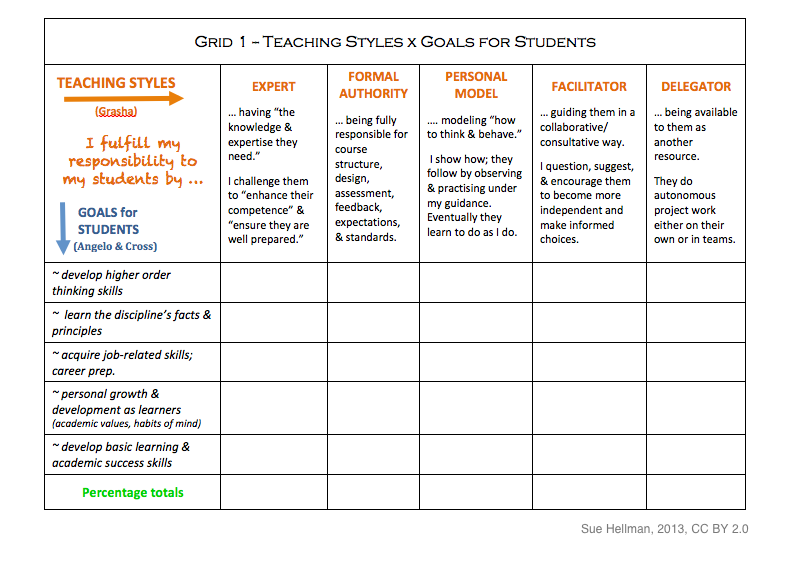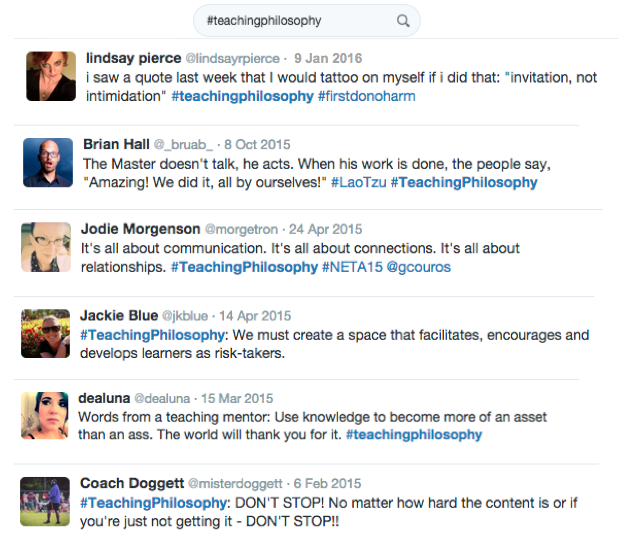Activity
| Site: | SCoPE - BCcampus Learning + Teaching |
| Group: | FLO MicroCourse: Write your teaching philosophy statement OER |
| Book: | Activity |
| Printed by: | Guest user |
| Date: | Tuesday, 23 December 2025, 10:44 AM |
The task

The goals of this activity are for you to (1) write one or more 'WHY' statements and (2) share them in the Open Forum. A tweet is about the right length. You can also comment on how you arrived at that 'WHY' or how it shapes your work as a teacher.
If you're ready to do this now or already have a 'Why' statement from a previous TPS, you can jump to the last step where you'll find a template with some writing prompts and a few real tweets shared under #teachingphilosophy in Twitter.
If you prefer to try the rest of the activity, work through as much or as little as you need to get those 'WHY' thoughts flowing. Then complete the task.
Self-assessment Inventories
There are 3 websites you can use to clarify your values with respect to teaching and learning. Each uses a long list of multiple choice questions to ascertain your preferences. They all provide feedback and guidelines about how to interpret your scores.
- Angelo & Cross’s Teaching Goals Angelo Inventory (1993) http://fm.iowa.uiowa.edu/fmi/xsl/tgi/data_entry.xsl?-db=tgi_data&-lay=Layout01&-view
- BC’s Teaching Perspectives Inventory (2001) http://www.teachingperspectives.com/tpi/
- Grasha & Riechmann’s Teaching Style Survey (1996, first developed 1976) http://longleaf.net/teachingstyle.html
When I tried them,
I
found completing the questionnaires time consuming without an equivalent return in terms of
insight. I ended up with a lot of information but few clues to help me integrate the details into a cohesive, useful picture of
myself as a teacher.
As a work-around, I’ve created 2 self-assessment grids using major categories of teaching activities and learning goals found in these inventories. Grid 1 crosses Angelo & Pratt’s teaching goals (1 above) with Grasha’s teaching styles (3). Grid2 crosses Pratt & Collins' teaching perspectives (2) with Grasha’s teaching styles (1 again).
The idea is to consider to what extent various teaching styles and perspectives are effective when it comes to working towards your and your students' learning goals.
View the grids
The .docx files are available for download. See below. 

Instructions
Interpret your results
Note: if this activity doesn't work for you, try doing one or more of the actual inventories instead. You can use their feedback as your starting point for recalling and noting illustrative examples and evidence to weave into your statement.
Last steps
Goals reminder: (1) write one or more 'WHY' statements and (2) share them in the Open Forum. A tweet is about the right length. You can also comment on how you arrived at that 'WHY' or how it shapes your work as a teacher.
If you're stuck for words, below you'll find a template with several prompts as well as a few tweets under #teachingphilosophy. When you've completed both goals, you're ready for the next step: brainstorming!

Resources
(2012, TILT) Learning and teaching philosophy. https://uminntilt.com/2012/09/03/learning-and-teaching-philosophy-got-one-you-openly-share-with-your-students/
M. Hassam (2017, eLearning Industry). Why we should apply the golde circle model to e-learning. https://elearningindustry.com/golden-circle-model-elearning-apply
(2017, IB Community Blog). Do you know why you decided to become a teacher? http://blogs.ibo.org/blog/2017/03/23/do-you-know-why-you-decided-to-become-a-teacher/